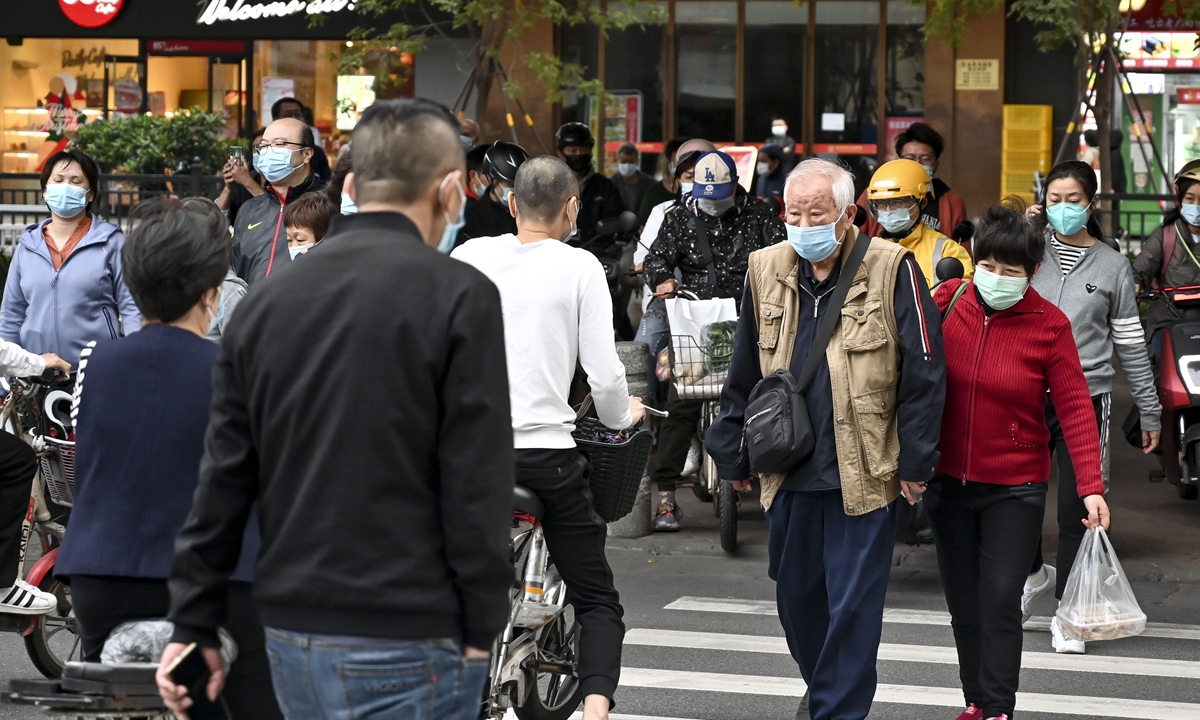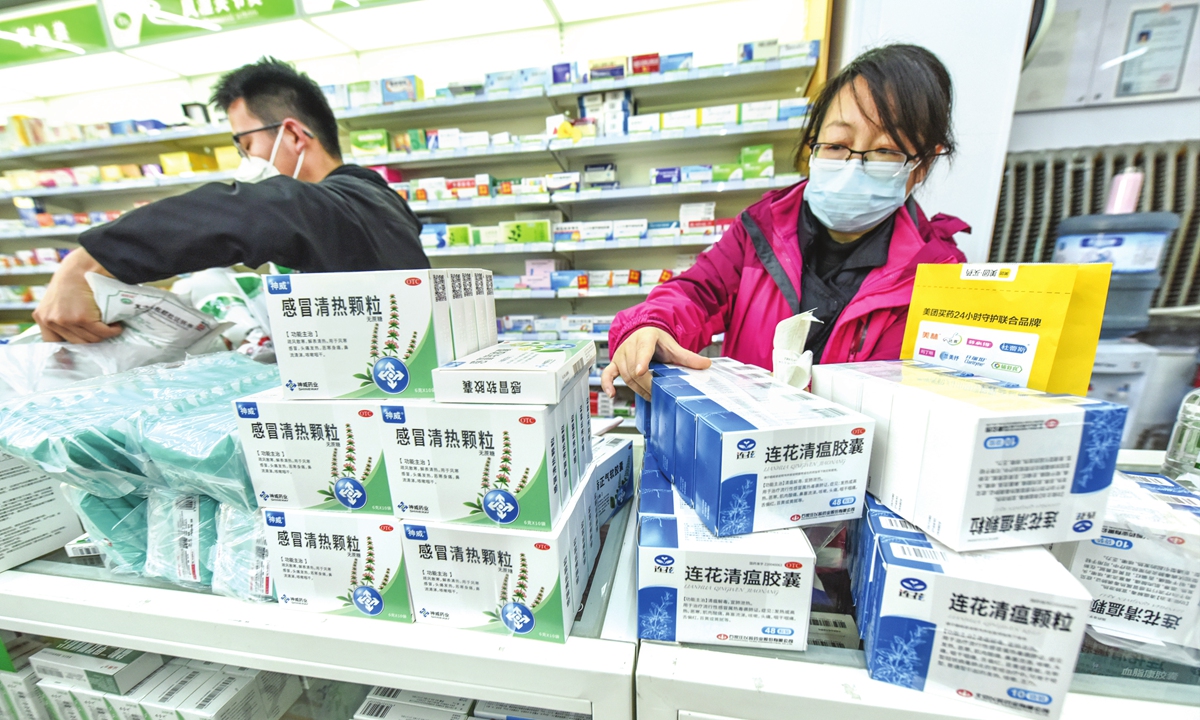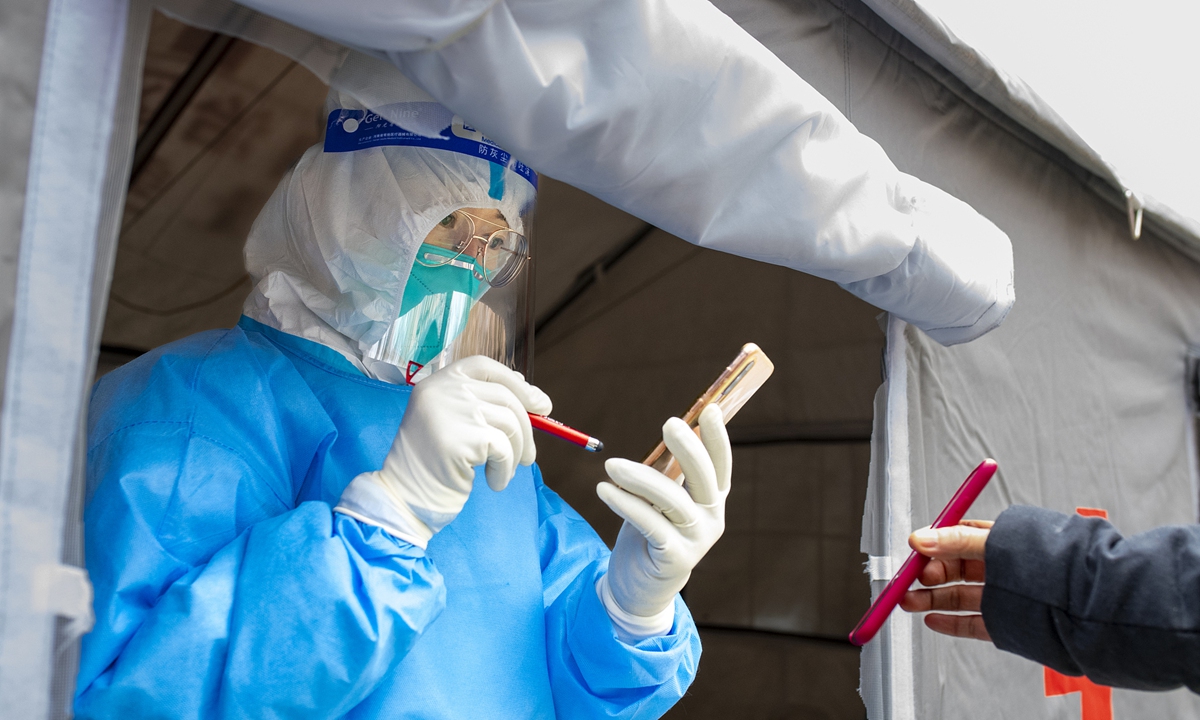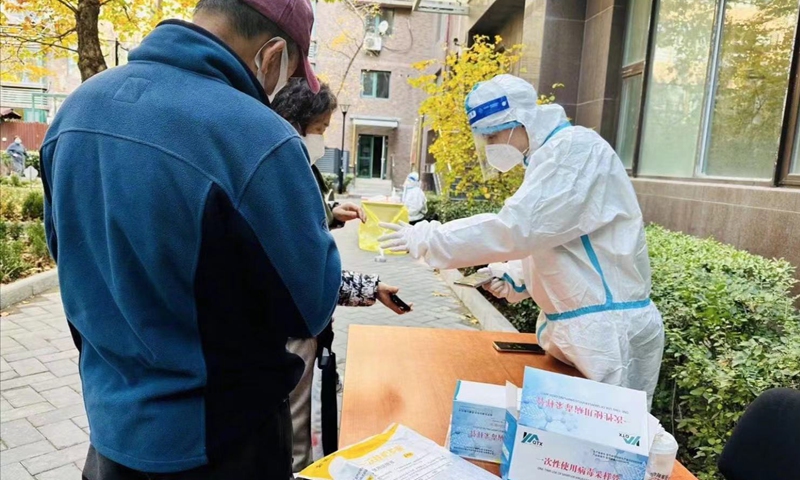Flexible measures implemented across China to ensure people's livelihoods amid cold front

People walk on the street in the Haizhu district, Guangzhou, South China's Guangdong Province, on November 30, 2022. Photo: VCG
Guangzhou in South China's Guangdong Province further refined its COVID-19 prevention measures on Wednesday by announcing it will lift temporary restrictions in some regions and officially allow qualified close contacts to be quarantined at home, as local authorities across the country are mulling more scientific and precise anti-epidemic policies in accordance with the newly released "20 measures."
As a cold wave gripped large parts of the country, many places in China have also implemented flexible epidemic-prevention measures to prioritize people's lives, livelihoods and production amid the severe epidemic situation.
In order to comprehensively and accurately implement the ninth edition of China's COVID-19 control protocols and further optimize 20 prevention and control measures, several districts in Guangzhou, capital of Guangdong, on Wednesday issued notices to optimize the anti-COVID-19 measures including lifting temporary restrictions, adjusting risk regions' classification and resuming on-site classes, according to the Guangzhou Health Commission.
Guangzhou, which on Tuesday registered 6,995 new local cases, called for more optimized regular measures to curb the epidemic in an earlier, more timely and accurate manner.
The Guangzhou authorities said on Wednesday that the city has conducted a precise approach to classify high-risk regions. In principle, areas where infected people live and where the risk of epidemic transmission is high will be designated as "high-risk areas." Generally, these areas will be designated by units or buildings, and shall not be arbitrarily expanded.
A Guangzhou resident surnamed Yan told the Global Times on Wednesday that they welcomed the optimized measures and he has received notice that people such as his parents who mostly stay at home don't need to take nucleic acid tests if they don't go out.
Along with Guangzhou, many other cities including Beijing, Chongqing, Zhengzhou and Taiyuan issued optimized measures dynamically based on the epidemic situation, in order to resume people's normal work and life in an orderly way.
China has reported daily new cases totaling more than 30,000 in the latest week.
The authority of Shijiazhuang, North China's Hebei Province neighboring Beijing, announced at a press conference on Wednesday that it will resume normal life and production in an orderly way on Thursday. Differentiated prevention and control measures will be implemented in the main district of the city.
The moves came after five rounds of mass nucleic acid testing were conducted in the city, discovering a total of 10,357 cases as of 5 pm on Wednesday. Based on the nucleic acid testing results, experts said that the virus transmission had been basically curbed in Shijiazhuang.
Viruses can reproduce more efficiently in the winter. The increase of COVID-19 cases across the country recently is a normal phenomenon due to the characteristics of the virus, Yang Zhanqiu, a professor of the pathogen biology department at Wuhan University, told the Global Times on Wednesday.
China has vowed to seriously deal with excessive epidemic management measures, as various cities in China announced optimized policies to reduce the impact of the epidemic on people's lives. "It's a good attempt, and more optimized measures are needed," said Yang.
Several districts in Beijing including Chaoyang and Tongzhou have announced that people without community activities don't need to take part in daily screening if they don't need to go out, an approach to achieve a more precise way to reduce spreading risks and save resources. The authorities also advised residents to wear N95 face masks and keep warm as the temperatures go down.
Taiyuan in North China's Shanxi Province announced similar policies, saying that students who take online daily classes don't need to present daily test reports.
In Kangbashi district in North China's Inner Mongolia Autonomous Region, the local authorities on Tuesday released the weather forecast, with the lowest temperature in the next 24 hours to reach -20 C, and suspended nucleic acid testing, while kindly reminding residents to keep warm and safe.
"China has performed well in COVID-19 prevention and control," said Yang. What we need to do is to "reduce large indoor gatherings" and "maintain clean air circulation" to reduce spreading risks. People are encouraged to wear face masks in public venues, especially during the season when viruses easily reproduce, Yang noted.
As the cold front drags temperatures down, many places have implemented measures to ensure people's livelihoods and production in the sectors of transportation, heat supply and agricultural production amid the ongoing epidemic.
In order to cope with the dramatic temperature decline, Beijing authorities on Tuesday required heating facilities to heat up and operate gradually in advance, and the city will guarantee heating supply in key venues including makeshift hospitals and nursing homes.
In Huaibei, East China's Anhui Province, city authorities this week made full preparations for the supply of water, power, gas, heating and communication, and focused on the safety of crops and agricultural facilities to ensure agricultural production safety.
"The heat supply and daily commodities are sufficient," a resident surnamed Yu in Shenyang, Northeast China's Liaoning Province told the Global Times on Wednesday. As a housewife, Yu said that she doesn't need to take daily screening.



